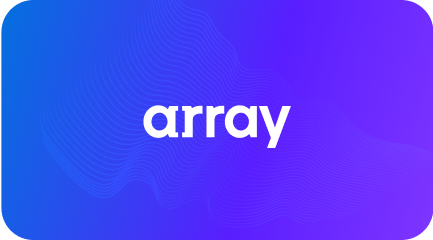Is there more than one way to screen a candidate? By analyzing a thousand interviews, including hiring outcomes and the total talk time ratio between candidates and their interviewers, we’ve discovered a few ways that first-round screens are run.
When sourced candidates are two times more likely to be hired versus outside applicants and there are a record number of job openings, we all know how important it is to balance learning about a candidate’s skill set while also sharing vital information about the role and company to turn star candidates into hires. Take talk times for instance. In a twenty minute interview, how are you deciding when a candidate speaks more, and when you should speak more?
In one BrightHire interview, a candidate who talked 63% of the time (and an interviewer 37% of the time) was able to share an in depth look of their experience in sales. On the flip side, a sourced or passive candidate with a proven track record might have you speaking more during the interview in order to sell the position. When you’re speaking 70% of the time, you’re able to share more than just key highlights about a role, but also the day to day responsibilities and career growth for the role. It’s a constant give or take.
Based on these observations, we’ve identified three types of screens that recruiters are commonly leveraging in their interview strategy.
The Research Screen

You know that screen where you start off not knowing much about the candidate and all you want to do is ask questions? That’s the Research Screen. Your goal for this interview is to dig into a candidate’s background as much as possible. When almost 30% of full time employees are looking for another job, you’re trying to dive into the motivations behind why the candidate may be looking for other opportunities – and how the firm can tailor its own pitch to entice the candidate for future interviews.
In letting the candidate do the bulk of the talking, you can confirm that their resume reflects their skills accurately. In one interview that we observed, an interviewer started off their questions in broad strokes before asking increasingly targeted questions about a candidate’s experience. From the talk time graphic here, you can see that the interviewer started out the call with a pitch, and then moved into questions – leaving plenty of time for the candidate to share.
Pros: You’re able to find out more about the candidate through this type of screen. As a listener, you’re able to develop connections between the candidate’s skills and the role at hand.
Cons: The candidate may feel like they did not receive enough information about the role and have additional questions. You can combat this by leaving the door open to answer additional questions via email or in a follow up call.
Talk time data:
- Candidate: 60-80%
- Screener: 20-40%
The Selling Screen

You have a sourced candidate who has plenty of indicators that they’re going to be a star hire. Perhaps this candidate is passive. They are currently employed and happy with their current role, but you’re doing your best to poach them. How do you get this candidate excited for the opportunity and consider leaving their position? Enter the Selling Screen. When you have high potential, quality candidates who may even be 120 percent more likely to have an impact on the company, you’re going to be expending all efforts to highlight the key advantages of the role and why the candidate should consider taking the position during the course of the conversation.
Prior to the screen, you’re likely identifying what makes the candidate a good fit, and if it’s a worthwhile tradeoff to have the candidate talk less, and therefore, collect less information about their background. Additionally, figuring out what you can offer the candidate that other competing offers cannot in advance, can ultimately translate to better conversions as you progress passive candidates through the pipeline.
Pros: Gives you a chance to impress a candidate and make them more likely to take the job offer
Cons: You learn less about the candidate and therefore, potential red flags can be missed
Talk time data:
- Candidate: 20-30 %
- Screener: 70-80 %
The Cookie Cutter Screen

“Tell me a little about yourself.” “What are your biggest strengths and weaknesses?” “Tell me about a time when…” Do these questions and phrases sound familiar to you? That’s probably because you’re already asking these questions regularly as part of a standard interviewing script for all your candidates. It’s what we affectionately think of as the Cookie Cutter Screen.
When you’re presenting the job, sharing why you’re interested in a candidate’s skill set, and then asking a standardized list of questions, you’re helping to reduce bias for all your interviews.
Everyone has their own interviewing style, which can lead to different talk times between screeners, but ultimately, this technique provides candidates with equal opportunity to share their qualifications. This can be particularly helpful when you have a wide range of candidates in the pipeline.
In many instances, you’re probably using parts of the Cookie Cutter Screen in conjunction with other screens. It’s not mutually exclusive. In one interview that we observed for instance, an interviewer began with a Cookie Cutter Screen before switching over to elements of the Research Screen to ask more targeted and specific questions to the candidate’s background.
Pros: Less preparation needed and consistency across candidates allows it to be easier to compare candidates
Cons: Less personable interview and personalization for the candidate
Talk time data: Variable
Everyone can agree that screens can be approached in multiple ways, and choosing the best screen for the moment is incredibly nuanced. However, regardless of approach, standardization of when to use these screens and the interview questions asked is important for addressing unconscious bias in recruiting. By using an interview intelligence platform, you can take this one step further by reviewing the conversation to ensure a fair performance review process. Screens are the first opportunity for both sides to put their best foot forward and ultimately, a strategic combination of the three screens above will help to effectively screen candidates and build a robust recruiting pipeline.









